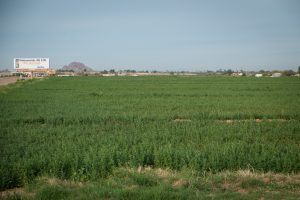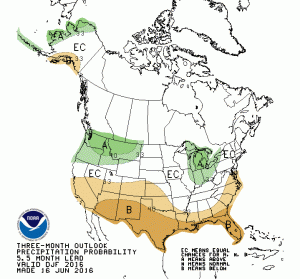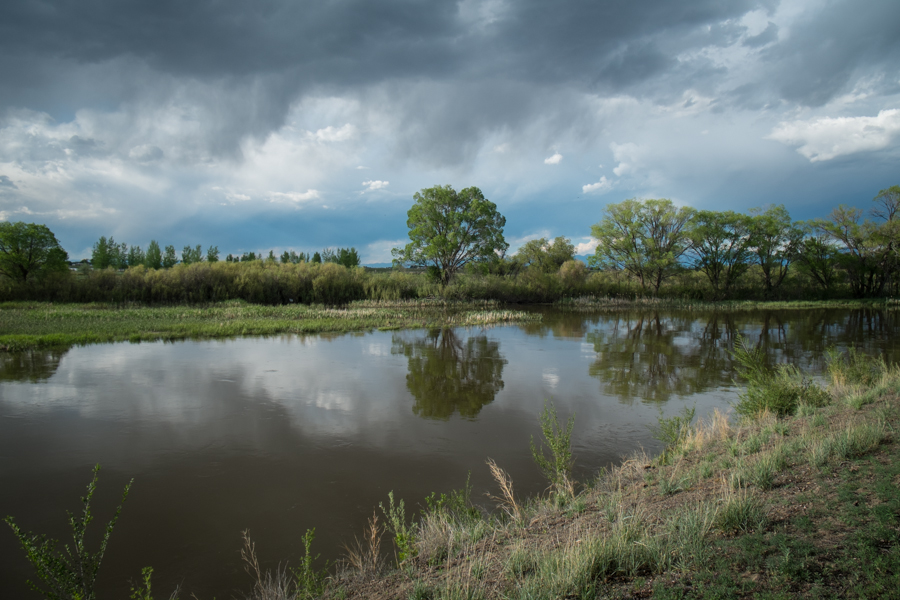tl;dr The Phoenix kerfuffle over a Nestlé bottled water plant is an example of people distracted by a facile but meaningless caricature of the problem they think they care about.
longer: When University of New Mexico Water Resources Program graduate student Sara Gerlitz* was looking at Arizona water management over the last year, she zeroed in pretty quickly on the Central Arizona Groundwater Replenishment District’s “2015 Plan of Operation“. If you’re interested in the long term sustainability of the greater Phoenix area’s water supplies, the plan and the processes it describes are super important.
The plan lays out how central Arizona water managers will meet their legal obligations to provide a 100-year assured supply of water to growing parts of Central Arizona in the context of groundwater pumping regulations and available supplies of imported Colorado River water. This is big deal stuff, central to Arizona’s sustainability. The back-and-forth over the details – the reasonableness of the assumptions that went into it, the risks if the estimates are wrong – makes for important reading if you’re interested in the deep and important details of how Arizona plans for its water future. But to the people of greater Phoenix, this seems to have not been a very interesting process at all. When the Arizona Department of Water Resources held a legally required public hearing on the plan March 30, 2015, not a single member of the public showed up to testify. Zero.

Irrigated alfalfa on the east side of the Phoenix metro area, February 2015
It is interesting to compare that lack of public attention with the current public kerfuffle over Nestlé’s plans to build a new water bottling plant in Phoenix. Some perspective: the CAGRD’s new plan of operation contemplates the need for roughly 50,000 acre feet of water per year by the mid-2030s. In comparison, the Nestlé plant will use about 100 acre feet of water per year. The CAGRD process was making important policy decisions about a supply of water 500 times larger than the Nestlé plant. No members of the general public showed up to the CAGRD process, while 37,000 people by Friday had signed an on line petition against the Nestlé plant.
Back in my errant youth, when I worked as a volunteer documentation writer for the big free software GNOME project, I became intimately familiar with what we called “bicycle shed” discussions, a shorthand drawn from the work of 1950s management scholar C. Northcote Parkinson. Here’s a nice short explanation:
Parkinson shows how you can go in to the board of directors and get approval for building a multi-million or even billion dollar atomic power plant, but if you want to build a bike shed you will be tangled up in endless discussions.
Parkinson explains that this is because an atomic plant is so vast, so expensive and so complicated that people cannot grasp it, and rather than try, they fall back on the assumption that somebody else checked all the details before it got this far….
A bike shed on the other hand. Anyone can build one of those over a weekend, and still have time to watch the game on TV. So no matter how well prepared, no matter how reasonable you are with your proposal, somebody will seize the chance to show that he is doing his job, that he is paying attention, that he is *here*.
Sometimes also called “Parkinson’s law of triviality“, it’s popular among geeks and mostly applied to software development discussions. But it generalizes, a nice shorthand for why people attach to simple things they think they can understand and act on, while ignoring the more important but vast and complex. I get why bicycle shed discussions are inevitable. But that doesn’t mean they are not a problem.
Here’s why, in the case of Phoenix and Nestlé.
Those 37,000 petition signatures suggest a bunch of people who care a lot about the sustainability of Phoenix’s water supply. That’s great! But they’ve attached that wagon of caring to the wrong horse. Central Arizona can do a great job of managing the sort of long term water sustainability problems sketched out in the CAGRD process (and in a bunch of others policy processes now underway), and it will have plenty of water for a Nestlé plant and lots of other things future Phoenicians (?) might want to do.
Or it could do a terrible job at those big picture processes, in which case rejecting the Nestlé plant won’t matter a hill of beans.
But a whole bunch of people have been left with an entirely different perception – that caring for Phoenix’s water sustainability future means killing that Nestlé plant.
This is a big problem for the pursuit of water sustainability in Phoenix, because the current community water management has done some important things to move it down the path toward sustainability (water use declining, aquifer rising, innovative conjunctive groundwater management institutional arrangements, etc.). If the protesters don’t get their way on the Nestlé plant, they’re gonna think Phoenix doesn’t care about water supply sustainability. And that would be completely wrong, and Phoenix water management would lose an important set of allies in the hard work yet to come in ensuring the sustainability of its water supply.
I don’t blame the mass of people signing the Nestlé petition here. Bicycle shed problems are inevitable because people care. Something must be done. This is something. Therefore, this must be done. The important thing is for the leadership of the anti-Nestlé crowd to demonstrate some seriousness about Arizona’s real water supply sustainability challenges, leading this mass of people now assembled into a more meaningful discussion of water supply sustainability, and not waste all of our time arguing over a bottled water plant.
* CAGRD governance issues were just a piece of Sara’s masters degree project, which primarily focused on the use of remote sensing tools to help water managers get a handle on agricultural water use – something that will be critical for Arizona’s long term water supply sustainability. It was a great project – she just finished, it’s not on line yet, but will soon be posted here.




